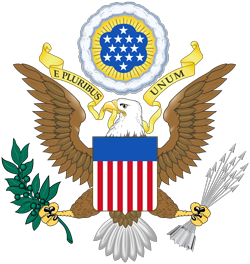 Tax rates and asset protection in a Trump Administration.
Tax rates and asset protection in a Trump Administration.
Let’s talk tax rates. Now that Donald Trump is transitioning to the Presidency and we have a republican controlled House and Senate we can anticipate some “Reagan like” tax law changes. [1] When Reagan came into office, tax rates on unearned income were at 70% and the prime rate was at an all-time high of 21.5% and averaged 12.65% over the decade of the 80’s. [2] The Reagan administration lowered the tax rate on unearned income to individual rates on earned income and long-term capital gains were taxed at a reduced rate of 40%. Now with a Trump administration we might see tax rates as low as 15% on interest and dividends.
This article will discuss the “clues” that were revealed during the campaign [3] as to what changes we can expect and how to protect our assets going forward.
What changes, what tax rates can we expect?
- Repeal of the Obamacare surtax – The Patient Protection and Affordable Care Act of 2010 surcharge is equal to 3.8% of a taxpayers “net investment income” from dividends, rents and capital gains. [4]
- Lower corporate income tax rates. – Currently we have the highest corporate tax rate in the world, at 38.82 %, The next highest is France at 34.43% and the lowest is the United Kingdom at 20%. Expect Trump to push for a corporate tax as low as 15%. Businesses can also expect to benefit from an election that allows fully expensing plant and equipment costs by waiving the deduction to write off interest on business loans.
- Lower individual tax rates – Tax brackets will be reduced from 7 to 3 with tax rates at 12%, 25% or 33%, down from 39.6%.
- Taxes on imports – You can expect higher consumer prices through tariffs on imported goods which leads to inflation which in turn leads to higher interest rates.
- Child Care Credits – even for the wealthy. These credits are a central part of his tax reduction plan.
8 Year-End TAX Planning Tips. What are the key planning tips for asset protection?
- Consider deferring sales of assets such as income producing real estate as these will become more valuable if the surtax is repealed and your net proceeds after tax will be higher if the sale is deferred to 2017.
- May make sense to use C corporations to lower your overall tax rate. With corporate tax rates at 15% and your individual tax rates as high as 33%, the C Corporation can be used to shelter your income from income taxes while you grow equity in your C corporation.
- Increased job creation through government funded infrastructure type public improvements – see article by John Paul Turner below on The Power of Eminent Domain and the Government’s Right to Take Your Property.
- Protect investment accounts by diversifying into inflationary hedges and investments that do well as interest rates rise while avoiding health care and related industry investments that presents obvious risks due to the uncertainty in the industry.
- Refinance floating rate loans to fixed rates. Lock in these historic low interest rates!
- Defer income into 2017 and accelerate expenses into 2016. Income will be taxed at lower rates and expenses taken in 2016 will be more valuable.
- Defer gains on sales and even consider a 1031 exchange on sales of real estate assets. Even the sale of a conservation easement qualifies as a sale of a “real property interest” that would allow the net proceeds to be reinvested in income producing real estate assets with the rental income being spared of the surtax charge.
- Defer major capital equipment purchase to 2017 to take advantage of the write-offs. Pay cash if possible to avoid the loss of the business interest deduction.
General Recommendations – We can expect change and with change comes uncertainty, which makes investors nervous and more cautious, so it is a good time to re-evaluate your investment portfolio to make sure you have good diversification, including assets and liabilities that grow in value as interest rates increase, such as adjustable rate assets (adjustable rate bonds or annuities) and fixed rate liabilities (on your home loan, for example). Time to lock in these historically low interest rates!
1. I was 30 years old when Reagan took over the oval office. The prospect of change was exciting for young professionals at the time.
2. � The Prime Rate is the rate banks charge their best customers on loans. See http://www.fedprimerate.com/wall_street_journal_prime_rate_history.htm.
3. You can also visit the Donald J. Trump website at http://donaldtrumppolicies.com/
4.� Or, alternatively, taxable income minus a threshold amount of $250,000 for married couples filing jointly, $125,000 for single filers, and $200,000 for all others.




 Tax rates and asset protection in a Trump Administration.
Tax rates and asset protection in a Trump Administration.